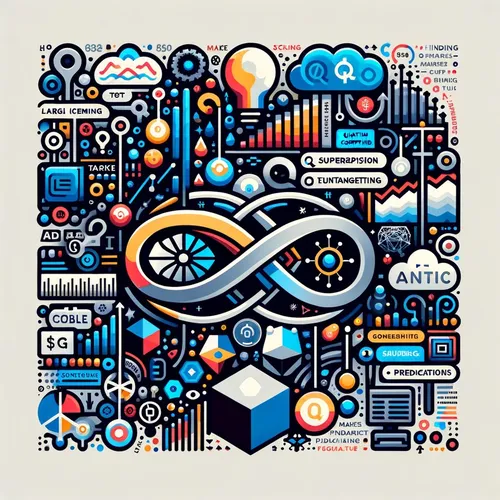Quantum Finance: Banking's Ghostly Risk Guardian | Quantum Market Watch
- Author
- Inception Point Ai
- Published
- Thu 01 May 2025
- Episode Link
- https://www.spreaker.com/episode/quantum-finance-banking-s-ghostly-risk-guardian-quantum-market-watch--65826331
This is your Quantum Market Watch podcast.
A whisper of cold air, the faint hum of superconducting circuits—this is where the future is being written today. I’m Leo, your Learning Enhanced Operator, and welcome back to Quantum Market Watch. This morning, a seismic announcement rippled across the financial sector: for the first time, a major international bank revealed it’s leveraging quantum computing to revolutionize risk modeling and real-time fraud detection.
Now, let’s zero right in. Just hours ago, at its London headquarters, HighStreet Bank unveiled a partnership with D-Wave Quantum, integrating D-Wave’s superconducting quantum processors into their risk analytics arm. For decades, banks have modeled risk using classical Monte Carlo simulations—powerful, but lumbering behemoths that gulp down processing power for hours, sometimes days, just to project market scenarios. But with quantum annealing, those same simulations can unfold in mere moments, slicing through the combinatorial fog of financial uncertainty like a photon through a double slit.
Picture a labyrinthine city map, every intersection a possible investment, every dead-end a looming risk. Classical computers, tireless but linear, probe these paths one by one. But a quantum computer—ah, it’s more like a flock of ghosts, each traversing all possible routes simultaneously. This is superposition at play, the uncanny ability for quantum bits, or qubits, to embody multiple states at once. Suddenly, finding the optimal path through that city shrinks from years to minutes.
What’s truly dramatic is how these quantum-enhanced models can now adapt in real-time as new data pours in. Imagine a flash crash, Brexit-style market turbulence, or a cyber-attack pulsing through financial plumbing. HighStreet’s quantum system can revise risk exposure models on the fly, flagging anomalies or cascading threats before they spiral out of control. Their Chief Quantitative Officer, Dr. Maya Sen, likened it to “having a financial weather radar that sees the storm before the clouds even gather.”
Let’s get technical for a moment—because this is what excites me most. D-Wave’s platform uses superconducting loops cooled to a fraction of a degree above absolute zero. Here, electrons flow without resistance, forging qubits that dance delicately between zero and one, exploiting not just superposition but quantum tunneling—where probability bends the rules and finds shortcuts unavailable to classical systems. It’s a symphony conducted in the silence of near-absolute zero, where decoherence threatens with every stray vibration, and every quantum bit is a tightrope walker above an abyss of uncertainty.
This news dovetails with the recent research showing quantum finance is now among the earliest commercial beneficiaries of hybrid quantum-classical solutions. In fact, forecasts predict that the quantum computing market could grow at a blistering 29% CAGR, with hardware—particularly superconducting qubit platforms—dominating industry spend through the end of the decade.
But why banks, why now? The answer lies in complexity. The global financial system, with trillions of real-time transactions, is a colossal entangled network—much like a quantum system itself. Old risk models run out of steam, just as classical algorithms choke on optimization problems where variables outnumber atoms in the universe. Quantum approaches, paired with classical processing, promise to break this logjam.
I have to share a personal note: every time I walk into a quantum lab, I’m struck by the parallels to trading floors. The flashing lights, the ceaseless data streams, the ever-present tension between chaos and order. But in the quantum realm, the uncertainty isn’t just a nuisance—it’s a resource. We harness probability, harness entanglement. Sometimes, to see the future, you have to embrace a little quantum weirdness.
